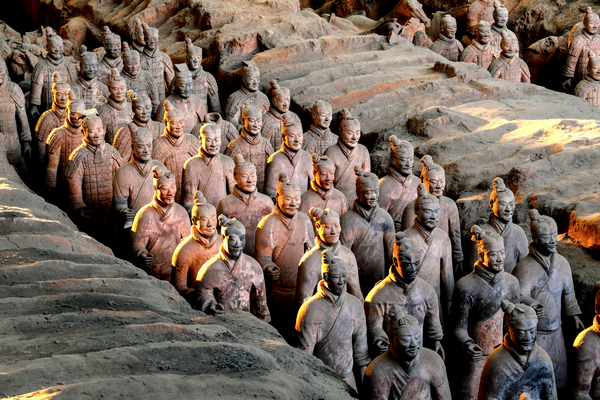Restorers piece together terracotta warriors
Eye for detail, infinite patience required
By XIN WEN in Xi'an | CHINA DAILY | Updated: 2020-10-21 07:41

Lan Desheng picked up a sand-colored pottery shard, surveyed the fragment and fitted it into the back of a Terracotta Warrior figure.
The 52-year-old conservator-restorer is part of a specialist team piecing together and repairing the Terracotta Army, which was discovered at the Mausoleum of the First Qin Emperor in Xi'an, Shaanxi province, in March 1974.
Pointing to life-size Terracotta Warriors wearing suits of armor and with their hair in buns, Lan said: "These are pieces of history that have been vividly preserved. More than 2,000 years have slipped by, and you can still sense the huge amount of talent that went into making these figures."
Lan said the team aims to restore the relics' original appearance by applying the principle of minimum intervention.
On-site "first aid" is a key element of the work. In the tomb pits where the relics were discovered, some 15 conservator-restorers toil by day and night. Work tables are placed in the corners of the pits, on which gray-uniformed restorers arrange different sets of tools.
Wang Chunyan, a researcher at Emperor Qinshihuang's Mausoleum Site Museum, is responsible for the on-site emergency protection of the cultural relics.
One afternoon in late September, as she carried out a routine inspection of the Terracotta Army No 1 pit, Wang's attention was drawn to the head of a Terracotta Warrior. The head had undergone four months of repairs and cleaning work on it was due to be completed soon.
"There was still some dirt on the right eyebrow, which had not been fully cleaned," she said, adding that such dirt is sought by researchers to further their work.
The layer of varnish on newly unearthed Terracotta Warriors in the funerary pits warps and shrinks within minutes of them being found, due to sudden changes in temperature and humidity. The colorful artwork on the figures also quickly peels off.
Wang said, "The greatest effort we make to safeguard the Terracotta Warriors goes into protecting the varnish and colorful painting."
Menthol is used for this work. After heating it to form an organic solvent, Wang said the conservator-restorers sprinkle fusant, a type of solution obtained during this process, on fabric, which is used to daub and reinforce the excavated figures. After the solution solidifies, the relics are taken to a "recovery room".
























